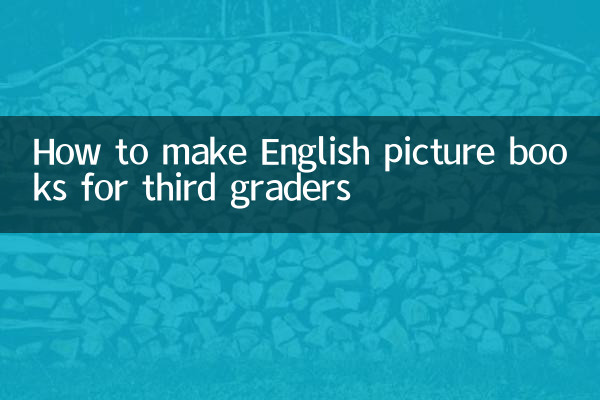How to make English picture books for third graders
In recent years, English picture book teaching has become more and more popular in primary schools, especially for third grade students. Learning English through picture books can not only stimulate interest, but also improve language skills. This article will combine the hot education topics in the past 10 days to introduce in detail how to make English picture books suitable for third grade, and provide structured data to help parents and teachers practice better.
1. Why do you want to write an English picture book for third grade students?

English picture books are a learning tool that combines pictures and simple English sentences, especially suitable for lower grade students. The following are hot discussion points in the field of education in the past 10 days, emphasizing the importance of picture books:
| hot topics | core ideas |
|---|---|
| English learning under the "double reduction" policy | Picture book learning can reduce mechanical memory and increase interest |
| Develop children’s early reading habits | Picture books are an effective tool to cultivate interest in reading |
| Interdisciplinary Teaching Trends | English picture books can be combined with art, science and other subjects |
2. Steps for making English picture books for third graders
Making English picture books is not complicated. The following are the specific steps and precautions:
| steps | Specific content | Things to note |
|---|---|---|
| 1. Determine the topic | Choose a topic that interests students, such as animals, holidays, family, etc. | Avoid overly complex content |
| 2. Design a storyline | Use simple sentences to form short stories, 1-2 sentences per page | Sentence structures should be repeated to facilitate memory |
| 3. Draw or select an illustration | Can be hand drawn or use copyright-free images | Pictures need to be clear and match the text |
| 4. Bind into a book | Bind with cardboard or make electronic version | Ensure durability |
3. Recommended popular picture book themes (search data in the past 10 days)
According to data from search engines and social platforms, the following topics have been the most popular among third graders recently:
| Ranking | Topic | Popular reasons |
|---|---|---|
| 1 | animal world | Suitable for children's interests and simple vocabulary |
| 2 | campus life | Close to students’ daily experience |
| 3 | Seasons and weather | Can be combined with natural science knowledge |
| 4 | fairy tale adaptation | Familiar stories reduce language difficulty |
4. Teaching application suggestions
After creating a picture book, how can you use it effectively for teaching? The following is the practical sharing of recent education bloggers:
1.interactive reading: Guide students to predict the content of the next page or imitate character dialogue.
2.Vocabulary expansion: Each picture book focuses on 5-10 new words and consolidates them through games.
3.extension activities: Let students adapt the ending or draw their own picture book version.
According to statistics from an online education platform, in classes that use picture books for teaching, students’ English speaking engagement increases by an average of 40%.
5. Frequently Asked Questions
Based on recent parent consultation data, the following high-frequency questions have been sorted out:
| question | solution |
|---|---|
| Children can’t understand English sentences | Paired with Chinese translation stickers for a gradual transition |
| The content of the picture book is too monotonous | Add interactive elements such as page turning and three-dimensional mechanisms |
| Not enough production time | Use PPT to quickly generate electronic picture books |
Conclusion
English picture books for third grade students are a bridge between language learning and interests. Through the structured guidance and hot data analysis of this article, I hope it can help you easily create English learning materials that your children will love. Remember to update the theme regularly to keep the content fresh!

check the details

check the details